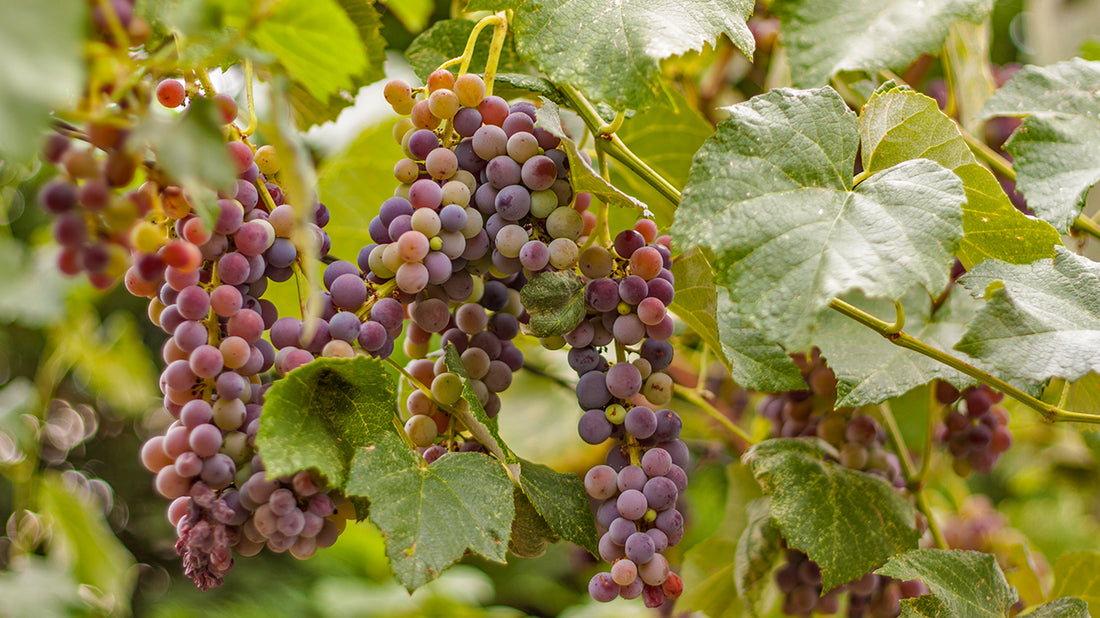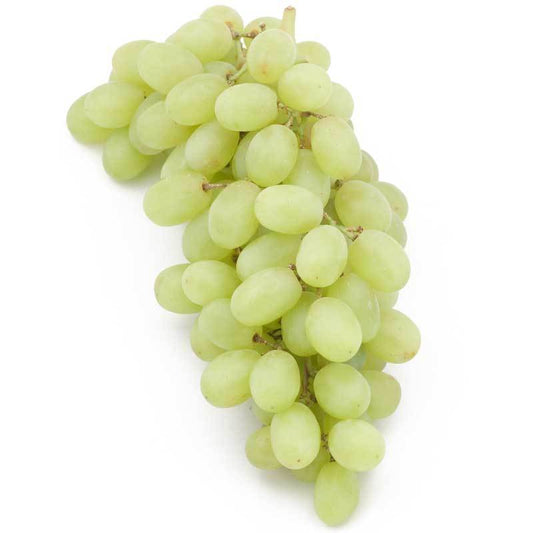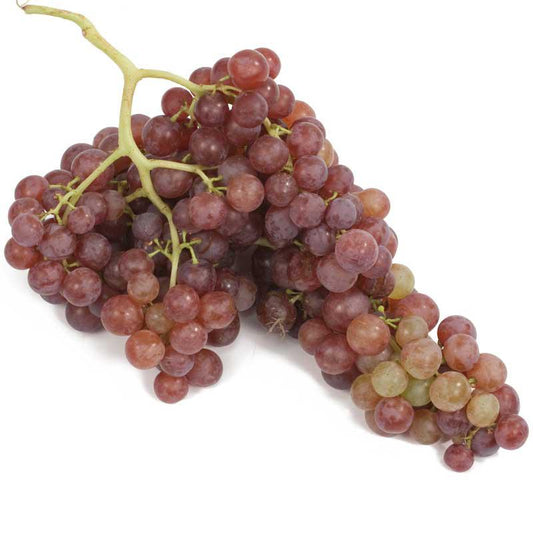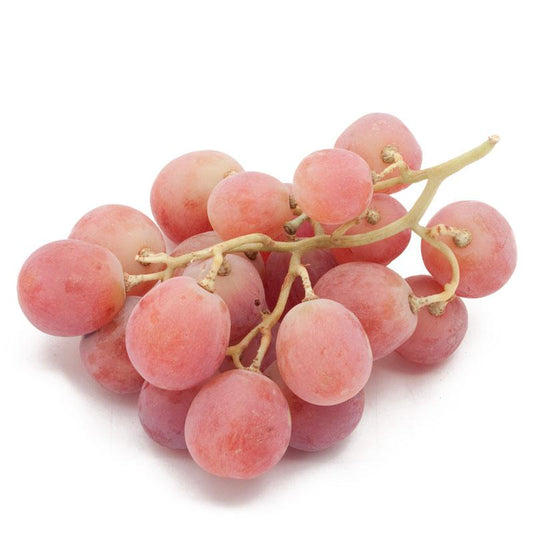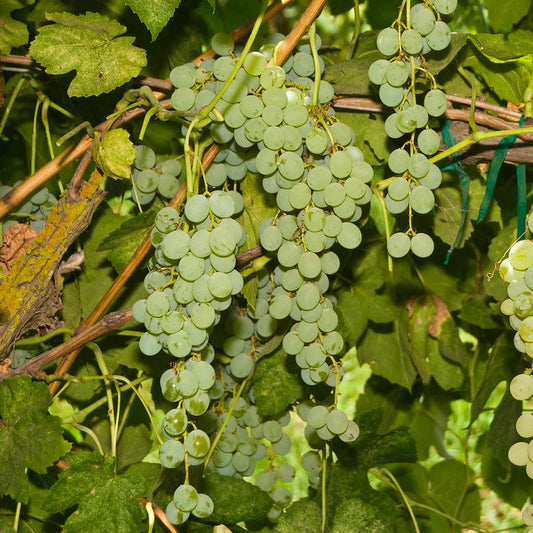Grapes are delicious for eating, or for wine making, and are excellent when used as ornamentals for summer shade, arbors or leafy walls. There are 2 basic classes of table grapes:
European varieties have tight skins, wine-like flavors, high heat requirements for ripening, and are the most common grapes grown in California. Use fresh, dried, or for juices and wine. Susceptible to powdery mildew, they require regular dusting or spraying with sulfur or other mildew control. Examples of European table grapes are Thompson, Flame, and Red Globe.
American varieties have Concord-like flavor, moderate heat requirements, are late blooming and resistant to powdery mildew. An example of an American table grape is Himrod.
Both classes can grow successfully in very warm sites at lower elevations, require deep, moderately fertile soils and regular pruning for high quality and production. All are self-fertile.
Heeling In

When your bare root grapes arrive, open the plastic bags immediately. It is best to plant them right away, within a week of delivery. If you cannot plant your grapes right away, you may “heel in” the plants to protect them and keep them alive (but still dormant) until you are able to plant them in their permanent spot.
Outdoors: To heel in bare root plants outside, pick a location that is shielded from wind. Dig a trench about twice as deep as the roots are long, with one side of the trench sloping at a 45° angle. Place in the hole roots side down, so that the plant is supported by the sloping side. Cover the roots with soil or sand and gently tamp down to avoid air pockets. Periodically check the root area, keeping the soil moist.
Indoors: To heel in bare root grapes indoors, whether due to snow or a frozen ground, choose a cool place like a root cellar, basement, or garage. It’s important to choose a place where the temperature stays between 38°F and 45°F. This is important so the roots neither freeze, nor does the plant break dormancy. Place the roots in a container with soil or sand and be sure to keep the root area moist.
Grapes prefer a light soil with good drainage and moderate to high fertility. They grow best in a deep soil with a pH between 5.5–7.0. Soil should be kept moist the first year after planting. Grapes will withstand short dry periods in following years. Soaker hoses or drip tape work best.
Fertility
A spring application of fertilizer (a balanced blend) is recommended after planting them in the winter. They usually do not need too much supplemental fertilization unless your soil is depleted. Adding compost in a ring around the trunk each year is a good idea. Conduct a soil test to make sure phosphorus and potassium levels are adequate for proper fruit production.
Planting Instructions
Grapes should be planted at the same level they were planted at the nursery and spaced 8’ apart for maximum performance. The hole should be wide enough to spread out the roots. Insert a support stake, 2–4” from the stem and as tall as you plan for the head.
Pruning & Training
Plant in winter or early spring, pruning back top growth to two or three buds at planting time. Prune anytime from December through February. The first growing season should produce several shoots from the buds left at planting time. Select the strongest shoot to train as the main trunk and head it back to the height you want. The second growing season should produce at least four lateral branches. Four or more laterals may be utilized to meet individual requirements, such as arbors, trellises, etc.
When pruning back vines, always leave a finger or stub with three or four buds. Light summer pruning may hasten fruit development. Grapes may produce an occasional fruit bunch the first year, and a good crop the second year if full sun is supplied. A southern exposure is to your advantage.
Mildew
Powdery mildew can be a serious problem for European grapes (most American types seem to be resistant to mildew). Use an organic fungicide that is labeled for powdery mildew.

